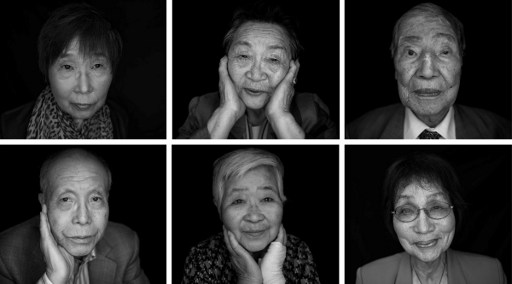Hiroshima bombing: the morning the earth shook

This combo shows black and white portraits taken on May 25 and 26, 2016 of survivors of the 1945 atomic bombing of Hiroshima, (top L to R) Keiko Ogura, Park Nam-Joo, Sunao Tsuboi, and (bottom row L to R) Shigeaki Mori, Misako Katani and Emiko Okada in Hiroshima.
The atomic blast at Hiroshima on August 6, 1945 killed 140,000 people, half of whom died quickly from intense heat, a huge shock wave, and radiation. US President Barack Obama is set to become the first sitting US president to visit one of the bomb sites when he journeys on May 27, 2016 with Japanese Prime Minister Shinzo Abe to Hiroshima, hallowed ground to Japanese but, for more than 70 years, a no-go zone for 11 of his Oval Office predecessors. AFP PHOTO
HIROSHIMA—With a blinding flash of light and an ear-splitting roar, the age of nuclear conflict arrived with terrifying and awe-inspiring force on August 6, 1945, changing the course of history, and killing 140,000 people.
The morning was a run-of-the-mill one for most Hiroshima residents. Housewives made breakfast for their families, children played in the sticky summer heat, and men hurried to get ready for work.
Few could have known the dangers above them as a US B-29 bomber, the Enola Gay pierced the sky, loaded with deadly cargo in its belly, the single most fearsome weapon the world had ever seen.
READ: Hiroshima with or without remorse
At 8:15 a.m., the pilot released Little Boy, a uranium bomb with a destructive force equivalent to 16 kilotons of TNT.
Article continues after this advertisementAfter the initial searing fireball, gusts of around 1.5 kilometers (one mile) a second roared outwards, carrying with them shattered debris, and packing enough force to rip limbs from bodies.
Article continues after this advertisementThe air pressure suddenly dropped, crushing those on the ground, and an ominous mushroom cloud rose, towering 16 kilometers above the city.
The smell of burning flesh filled the air as scores of badly injured survivors tried to escape the inferno by diving into the rivers that criss-crossed Hiroshima.
Countless hundreds never emerged, pushed under the surface by the mass of desperate humanity; their charred bodies left bobbing in the brackish water.
Many died of their terrible injuries over the following hours and days; lying where they fell, desperate for help that would never come, or even just for a sip of water.
For those who survived, there was the terrifying unknown of radiation sickness still to come.
Gums bled, teeth fell out, hair came off in clumps; there were cancers, premature births, malformed babies and sudden deaths.
Seven decades later, some stone buildings that survived the supersonic blast still bear the shadows of anything — or anyone — that was incinerated in front of them.
The mangled skeleton of a domed exhibition hall — the only structure left standing near the epicentre — stands as a grim reminder of the power of the world’s first atomic bombing, a sight that Barack Obama will see Friday when he becomes the first sitting US president to visit the city.
READ: Obama at Hiroshima
The Hiroshima attack was followed three days later by the Nagasaki bombing. In the wake of the overpowering twin bombs, Japan surrendered less than a week later, ending World War II.